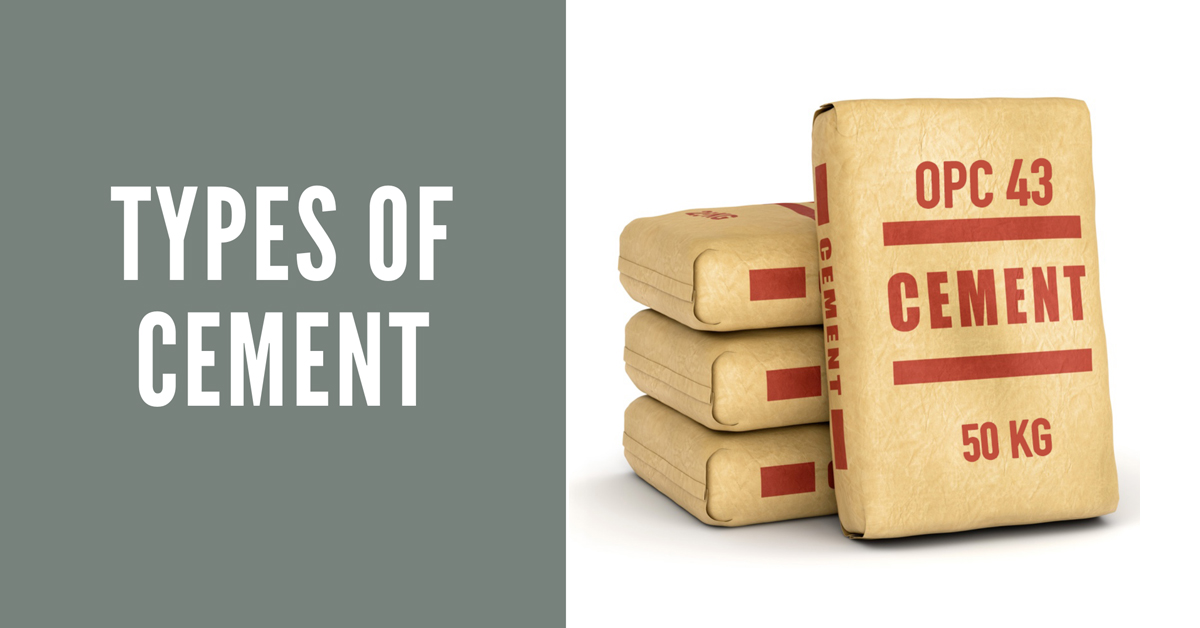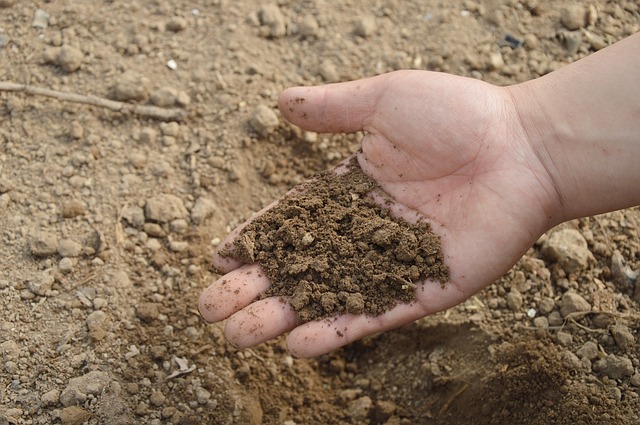
The characteristics of cement can be altered by altering the grinding fineness or the oxide composition. The use of additives, changing the chemical composition, and use of different raw materials have resulted in the availability of many types of cement to cater to the need of the construction industries for specific purposes.
Hence, each type of cement prepared has its properties and is used for desired performance in a given environment. In this article, I am describing different types of cement in detail. So, read the article till the end for complete information.
Types of Cement
Following are the 19 different types of cement and listed below:
- Ordinary Portland Cement (OPC)
- Portland Pozzolana Cement (PPC)
- Rapid Hardening Cement
- High Alumina Cement
- Super sulfated Portland Cement
- Sulphate Resisting Cement
- Portland Slag Cement
- Low Heat Cement
- Quick Setting Cement
- White Cement
- Hydrophobic Cement
- Expansive Cement
- Air Entraining Cement
- Colored Cement
- Blast Furnace Slag Cement
- Masonry Cement
- Rediset Cement
- Oil Well Cement
- Concrete Sleeper grade Cement
ASTM Classification
Before discussing the aforementioned types of cement, it is important to understand how Portland cement is categorized according to ASTM (American Society for Testing Materials) criteria for general information. According to ASTM, there are several different varieties of cement, including Type I, Type II, Type III, Type IV, Type V, Type IS, Type IP, and Type IA, IIA, and IIIA.
Type I:
For use in general concrete construction when the unique characteristics listed for Types II, III, IV, and V are not necessary (Ordinary Portland Cement).
Type II:
For usage where moderate heat of hydration is required or in general concrete construction exposed to moderate sulphate action.
Type III:
When high early strength is needed, utilize (Rapid Hardening Cement).
Type IV:
When low heat of hydration is needed, use this (Low Heat Cement).
Type V:
When high sulphate resistance is needed, use (Sulphate Resisting Cement).
The cement of the IS type is also included in ASTM standards. This is composed of a precise and consistent mixture of finely ground slag and type I Portland cement. The slag content is between 25 and 70 percent of the weight of Portland Blast-Furnace Slag Cement.
Type IP:
This consists of a precise and consistent mixture of fine pozzolana and Portland Cement (or Portland Blast Furnace Slag Cement), with the pozzolana percentage ranging from 15% to 40% of the total cement weight.
Type IA, IIA, and IIIA:
These are the cement of type I, II, or III that have an inter-ground air-entraining agent where air-entrainment in concrete is desired.
Ordinary Portland Cement
(i) Ordinary Portland Cement 33 Grade– IS 269: 1989
(ii) Ordinary Portland Cement 43 Grade– IS 8112: 1989
(iii) Ordinary Portland Cement 53 Grade– IS 12269: 1987
OPC, or ordinary Portland cement, is by far the most important type of cement. Depending on the cement’s strength after 28 days of testing, the OPC was divided into three grades: 33 grade, 43 grade, and 53 grade. This was done in accordance with IS 4031-198. Cement is referred to be 33-grade cement if the strength at 28 days is not less than 33 N/mm2, 43-grade cement if the strength is not less than 43 N/mm2, and 53-grade cement if the strength is not less than 53 N/mm2. This cement is used for general construction purposes.
Portland Pozzolana Cement (IS: 1489 -Part I)
This cement is manufactured by inter-grinding cement clinkers with 10-25% pozzolanic materials. Pozzolanic materials are essentially siliceous and aluminous compounds that in themselves do not possess any cementitious property, but when finely divided in the presence of water react with calcium hydroxide formed during the hydration of cement resulting in the formation of a compound that possesses the cementitious property.
Properties:
- Lower rate of development of strength.
- Ultimate strength is comparable with OPC (Ordinary Portland Cement).
- High tensile strength.
- High resistance to chlorides and sulfates.
- Higher resistance against expansion.
- Offers higher water tightness.
- Evolves less heat during hydration.
Uses:
Portland Pozzolana Cement is used in mass concrete such as dams and in places of high temperature as it has low heat evolution.
Rapid Hardening Portland Cement (IS:8041)
Rapid hardening Portland cement has high lime content and can be obtained by increasing the C3S content but is normally obtained from OPC clinker by finer grinding (450m2/kg).
The basis of the application of rapid hardening cement (RHC) is hardening properties and heat emission rather than setting rate. This permits the addition of a little more gypsum during manufacture to control the rate of setting.
RHC attains the same strength in one day that ordinary cement may attain in 3 days. However, it is subjected to a large shrinkage and the water requirement for workability is more.
The cost of rapid-hardening cement is about 10 percent more than ordinary cement.
Concrete prepared with this type of Cement can be safely exposed to frost since it matures more quickly.
Uses:
Rapid Hardening Portland Cement (RHC) is suitable for the repair of roads and bridges. Also used when the load is going to be applied in a short period of time.
High Alumina Cement (IS:6452)
This cement is not a type of Portland cement. It is manufactured by fusing 40 percent of bauxite, 40 percent of lime, and 15 percent iron oxide with a little ferric oxide, silica, magnesia, etc. at a very high temperature.
The alumina content in this cement should not be less than 32%. The resultant product is ground finely to form a fine powder.
Monocalcium aluminate is the main cement ingredient that interacts with water and forms dicalcium octahydrate hydro aluminate and aluminum oxide hydrate.
2(CaO.Al2O3.10H2O) + H2O = 2CaO.Al2O3.8H2O + 2Al(OH)2
Properties:
- This cement does not set quickly.
- The initial setting time (minimum) in this type of cement is 30 minutes, even up to two hours.
- The final setting time in this cement should not exceed 10 hours (600 minutes).
- High early strength.
- High heat of hydration.
- Resistance to chemical attack.
Uses:
This type of cement is used when a structure is exposed to the action of seawater, acidic water, sulfates, and action of fire. In addition, this cement is widely used for precasting.
This cement should not be used in places where the temperature exceeds 18°C.
Super sulfated Portland Cement (IS:6909)
This cement is manufactured by inter grinding a mixture of granulated blast furnace slag not less than 70%, calcium sulfate, and a small amount of 33-grade Portland cement. Tricalcium aluminate is less than 3.5% in this cement.
Properties:
- The water resistance of concrete from this cement is higher than that of common Portland cement.
- Low heat of hydration.
- Resistant to chemical attacks particularly sulfates.
- The initial setting time of this cement should not be less than 30 minutes.
- The final setting time of this cement should not be more than 10 hours (600 minutes).
Uses:
This type of cement is used for similar purposes as common Portland cement. Since this cement has higher water-resisting property, it is preferred to be used in hydraulic engineering installations and in construction planned for service in moist media.
For example:
- RCC pipes in groundwater,
- Concrete structure in sulfate-bearing soils,
- Sewers carrying effluents.
Supersulphated portland cement should not be used in construction exposed to frequent freezing-and-thawing or moistening-and-drying conditions.
Sulfate Resisting Portland Cement (IS: 12330)
The amount of tricalcium aluminate is restricted to less than 5 percent in this cement and it results in the increase in resisting power against sulfate. To clarify, it should not be mistaken for Supersulphated cement.
Uses:
The use of this cement is beneficial in concrete structures that are likely to be damaged by severe alkaline conditions such as canal linings, culverts, siphons, etc.
Portland Slag Cement (IS: 455)
This cement is manufactured by intimately inter grinding and uniform blending of a mixture of Portland cement clinker and finely ground granulated slag.
Properties:
- The chemical requirements of this cement are the same as that of 33-grade portland cement.
- The Specific surface should not be less than 225 m2/kg.
- The expansion should not be more than 10mm and 0.8 percent when tested by the Le Chatelier method and Autoclave test respectively.
Uses:
This cement can be used as an alternative to Ordinary Portland Cement. However, because of its low heat of hydration property, it can also be used for mass concreting in dams, foundations, etc.
Low Heat Cement
In this cement, a considerable amount of heat is produced during the setting action. This type of cement is used in order to reduce the amount of heat. It is produced by reducing the proportions of tricalcium Aluminate (C3A) and C3S and increasing the proportion of dicalcium silicate (C2S) and tetra calcium aluminoferrite. The rate of development of strength is low in this cement but the ultimate strength is the same as that of OPC.
Properties:
- Less heat is evolved.
- The expansion should not be more than 10mm and 0.8 percent when tested by the Le Chatelier method and Autoclave test respectively.
Uses:
This cement is most suitable for large mass concrete works such as dams, large raft foundations, etc.
Quick Setting Cement
This cement is produced by reducing the quantity of gypsum and adding a small percentage of aluminum sulfate.
Properties:
Initial setting time= 5 minutes
Final setting time= 30 minutes
Uses:
This cement is generally used in grouting operations and underwater concreting.
White Cement
White cement is manufactured from pure white chalk and clay free from coloring oxides of iron. The greyish color of cement is due to the presence of iron oxide. So, the amount of iron oxide is reduced and limited to 1 percent.
Properties:
- Fineness = 395 m2/kg
- Setting time = 100 min
- The compressive strength of white cement is 90 percent of that of ordinary portland cement.
Uses:
- Used for Terrazzo flooring
- Face plaster of walls (stucco)
- Ornamental works
Water Repellent Cement (IS: 8043)
Water-repellent cement contains admixtures such as stearic acid, boric acid, and oleic acid which decrease the wetting ability of the cement grains and are mixed with ordinary portland cement during the grinding of clinker. These admixtures form a thin film around the cement particles which prevents the entry of atmospheric moisture. These water-repellent films formed around each particle reduce the rate of deterioration of cement due to storage as it avoids the absorption of moisture from the atmosphere by the cement particles.
Properties:
-
- The specific surface should not be less than 350m2/kg.
Uses:
This cement is most suitable for basements and for making watertight concrete as it has greater water resistance and water impermeability.
Air Entraining Cement
This cement is manufactured by inter-grinding Vinsol resin or vegetable fats and oils and fatty acids with ordinary cement. These materials have the property to entrain air from the atmosphere in the form of tiny air bubbles in concrete.
Properties:
- Higher resistance against freezing and scaling action of salts.
- Air entrainment improves the workability of concrete thus reducing the water-cement ratio which in turn reduces shrinkage, etc.
Uses:
This cement is used for the same purposes as that Ordinary Portland Cement.
Colored Cement
White cement or grey Portland cement is used as the base for the creation of various colored types of cement. White cement is an expensive base material to utilize. Red or brown cement can only be produced with the use of grey cement. Portland cement that has had 5–10% pigment added makes up colored cement. It is usual to grind the cement and pigment together because mixing would not result in an evenly dispersed pigment throughout the cement. The qualities a pigment must possess in order to be utilized in colored cement include color resistance to exposure to light and weather, fine particle size, chemical makeup that does not affect or harm the cement, and the lack of soluble salts.
You May Also Like to Read:
Last words:
I hope you got complete information about the Types of Cement in this article.
If you found this article helpful, share it with your friends.
Leave a comment if I missed anything.
Happy Learning!!


